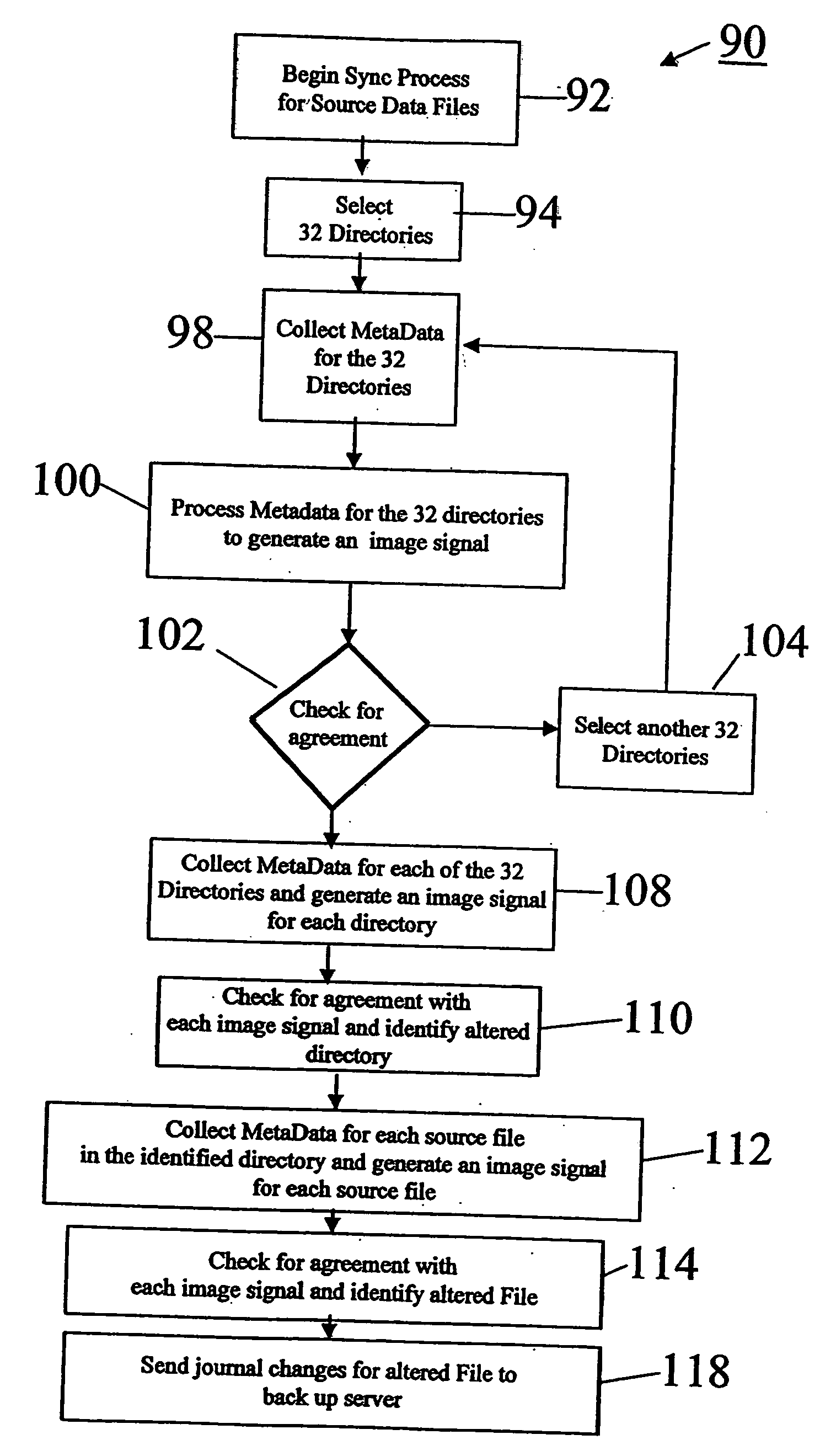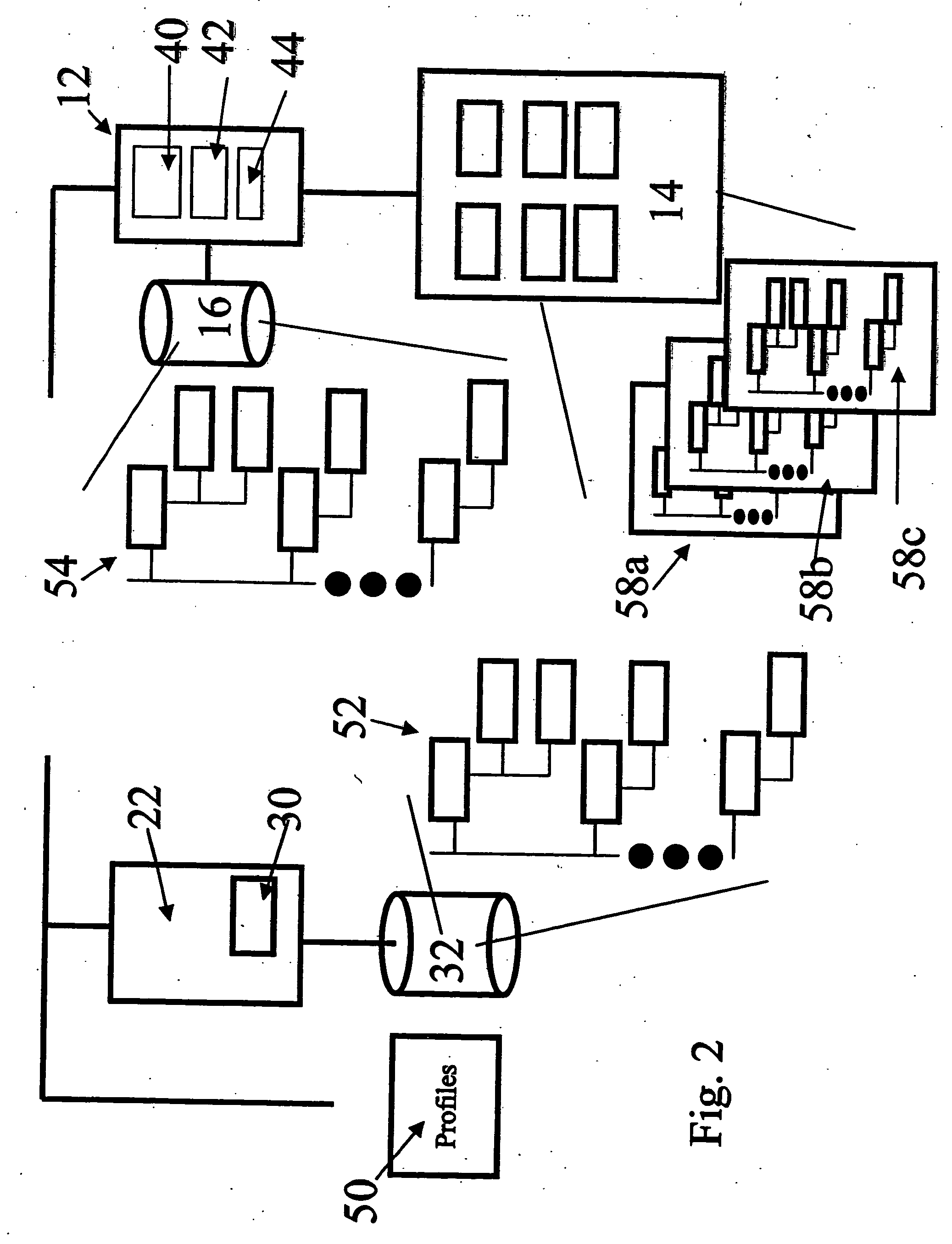Systems and methods for backing up data files
- Summary
- Abstract
- Description
- Claims
- Application Information
AI Technical Summary
Benefits of technology
Problems solved by technology
Method used
Image
Examples
example 1
[0077]
JobNetwork ConsumptionJob 150%Job 275%Job 330%
the process 44 may use the greatest consumption value of these active jobs, which is 75%. When Job 2 completes, the process 44 throttles its bandwidth usage to 50%, as both Job 1 and Job 3 are still running.
[0078] To control the bandwidth employed by the system 10, in one practice the bandwidth control process 44, for each policy set by the user, calculates a transmit window. A transmit window is be understood as the theoretical time to transmit the packet plus a delay time between each packet. At runtime, the actual time (T 1−T0) to transmit and the transmit window (P) may be used to determine the length of the delay as follows: [0079] Get start time (T0) [0080] Send data [0081] Get stop time (T1) [0082] Delay (P−(T1−T0))
[0083] If the administrator chooses a network capacity that is less than the actual line capacity, the process 44 may attempt to emulate the selected network capacity.
[0084] This algorithm allows the process 4...
example 2
This example is provided for 10% of a 56 kbit line. The packet size lookup will produce a packet size of 2048 bytes. The packet size in kbits is calculated as:
2048 bytes*8 bits / byte / 1024 bits / kbits=16 kbits
The time to transmit in milliseconds is calculated as:
16 kbits / 56 kbits / sec*1000 ms=286 ms
The capacity in bytes / period (60 second period) is calculated as:
((56 kbits / sec*1024 bits / kbits) / 8 bits / byte)*60 secs / min 430080 bytes / min
The effective rate is calculated as:
430080 bytes / min*10%=43008 bytes / min
The packets to send is calculated as:
43008 bytes / min / 2048 bytes=21 packets
The time to delay is calculated as:
(60000 ms−(21 packets*286 ms) / 21 packets=2571 ms
The transmit window is calculated as:
286 ms+2571 ms=2857 ms
Thus, the process 44 calculates a packet size of 2048 bytes and a potential time delay of 2571 ms between each packet. The transmit window is 2857 ms.
[0096] Note that at 1 GB speed, no matter what percentage of network capacity the user selects the pro...
PUM
 Login to View More
Login to View More Abstract
Description
Claims
Application Information
 Login to View More
Login to View More - R&D
- Intellectual Property
- Life Sciences
- Materials
- Tech Scout
- Unparalleled Data Quality
- Higher Quality Content
- 60% Fewer Hallucinations
Browse by: Latest US Patents, China's latest patents, Technical Efficacy Thesaurus, Application Domain, Technology Topic, Popular Technical Reports.
© 2025 PatSnap. All rights reserved.Legal|Privacy policy|Modern Slavery Act Transparency Statement|Sitemap|About US| Contact US: help@patsnap.com



